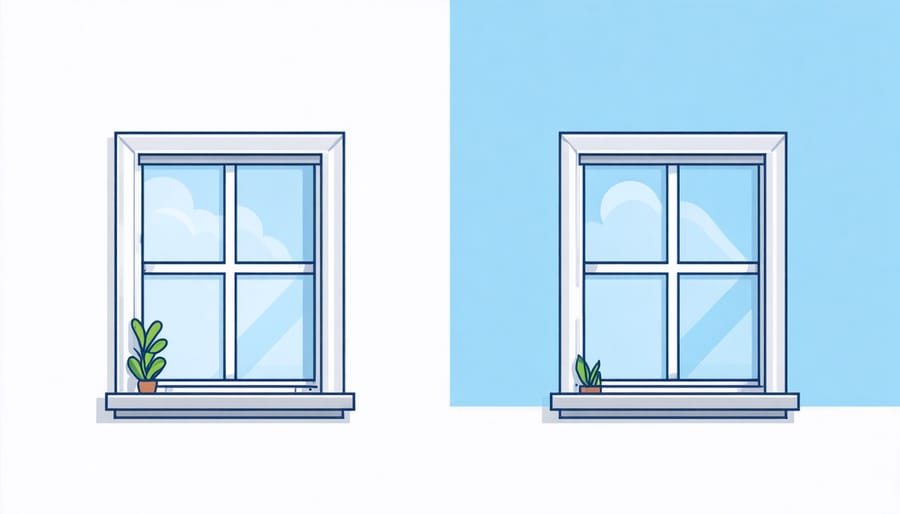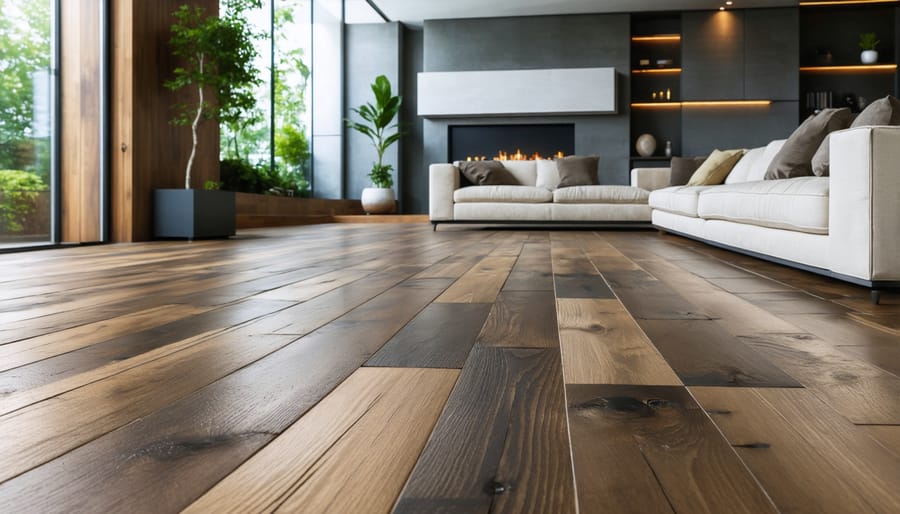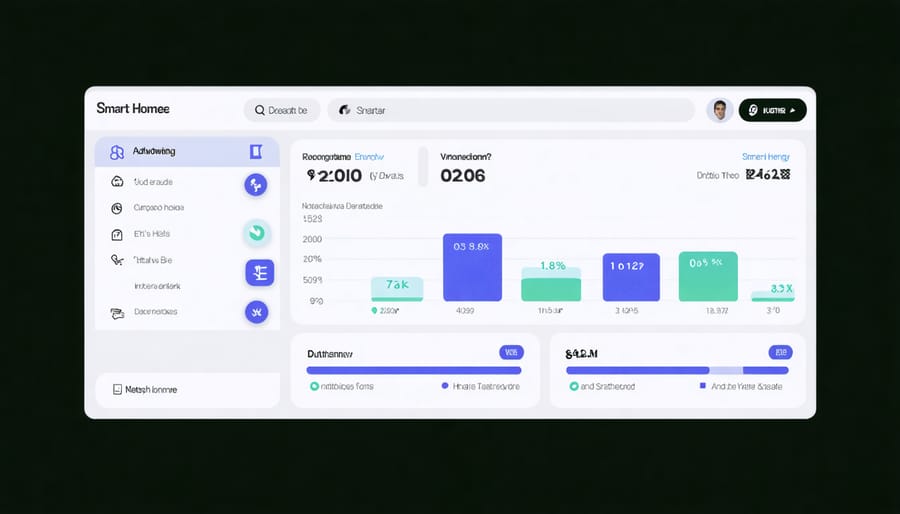Transform your living space into an eco-conscious sanctuary while boosting your property value and slashing utility costs. Modern sustainable renovations deliver a powerful triple benefit: environmental protection, enhanced comfort, and significant long-term savings. Starting with home energy efficiency basics, strategic upgrades like dual-pane windows and smart thermostats can reduce energy consumption by up to 30%. Beyond these foundational improvements, innovative solutions such as reclaimed materials, water-efficient fixtures, and solar installations now offer homeowners unprecedented opportunities to create beautiful, environmentally responsible spaces without compromising style or functionality.
Whether you’re planning a complete home overhaul or seeking smaller sustainable updates, eco-friendly renovations represent a smart investment in both your property’s future and our planet’s health. Today’s green building technologies and materials have evolved dramatically, making sustainable home improvements more accessible and affordable than ever before. By incorporating these environmentally conscious choices into your renovation plans, you’ll create a healthier living environment while contributing to a more sustainable future.
Energy-Efficient Updates That Pay Off
Smart Window Solutions
Windows play a crucial role in your home’s energy efficiency, and smart window solutions can significantly reduce your environmental footprint while keeping your energy bills in check. When considering window upgrades, start by assessing your current windows for drafts, condensation, or visible damage – these are clear signs it’s time for an upgrade.
Double-glazed and triple-glazed windows are excellent investments, creating an insulating barrier that keeps your home cooler in summer and warmer in winter. Look for windows with Low-E (low-emissivity) coating, which reflects heat while allowing natural light to pass through. This clever technology means you’ll rely less on artificial heating and cooling throughout the year.
For existing windows, several cost-effective treatments can boost their efficiency. Window films are an affordable option that can block up to 99% of UV rays while reducing heat loss. Cellular shades, also known as honeycomb blinds, create air pockets that provide additional insulation. These can be particularly effective in older homes where complete window replacement isn’t feasible.
When shopping for new windows, pay attention to the U-factor and Solar Heat Gain Coefficient (SHGC) ratings. The lower these numbers, the better the window’s insulating properties. Many energy-efficient windows now come with gas fills – usually argon or krypton – between the panes, providing superior insulation compared to air-filled alternatives.
Remember to consider your climate zone when selecting windows. South-facing windows should maximize solar gain in cold climates, while homes in warmer regions benefit from windows designed to minimize heat absorption. Professional installation is key to ensuring your new windows perform as intended, so don’t skip this crucial step in your eco-friendly renovation journey.

Modern Insulation Techniques
Modern insulation has come a long way from traditional fiberglass, with numerous eco-friendly insulation options now available that are both effective and environmentally responsible. Natural materials like sheep’s wool, recycled denim, and cellulose made from recycled paper products are leading the charge in sustainable insulation solutions.
One of the most innovative approaches is spray foam made from soy or other plant-based materials, which creates an exceptional air seal while reducing your carbon footprint. These natural alternatives perform just as well as conventional materials, often providing better temperature regulation and sound dampening properties.
Cork and hemp insulation are gaining popularity for their renewable nature and excellent thermal properties. Both materials are naturally resistant to mold and pests, making them ideal for long-term installation. Another breakthrough is aerogel insulation, which, despite its higher cost, offers superior insulating properties in a remarkably thin profile.
Installation techniques have also evolved to maximize efficiency. The “whole-house” approach ensures that insulation works in harmony with other building components, eliminating thermal bridges and air leaks. Strategic placement of insulation in key areas like attics, walls, and crawl spaces creates a complete thermal envelope.
For DIY enthusiasts, many of these materials come in easy-to-install batts or rolls. However, for optimal results, consider working with a certified green building professional who can assess your home’s specific needs and recommend the most effective solution. Remember to pair your insulation upgrade with proper ventilation to maintain healthy indoor air quality and prevent moisture issues.
Water-Wise Renovation Choices

Low-Flow Fixtures Worth Installing
Ready to make a significant impact on both your water bill and the environment? Installing low-flow fixtures is one of the most effective water saving techniques you can implement during your eco-friendly renovation. These smart upgrades can reduce your water consumption by up to 50% without compromising performance.
Start with your bathroom faucets by installing aerators or replacing them with WaterSense-certified models. These simple changes can reduce water flow from the typical 2.2 gallons per minute to a conservative 1.5 gallons or less. For showerheads, modern low-flow options use innovative technology to maintain strong water pressure while using only 1.75 gallons per minute – you’ll hardly notice the difference!
Don’t forget about your toilets, which can be major water wasters. Dual-flush toilets give you the choice between a light flush (0.8 gallons) and a full flush (1.6 gallons), perfect for different needs. If replacing your toilet isn’t in the budget, consider installing a dual-flush converter kit – it’s an affordable alternative that’s easy to install yourself.
The kitchen deserves attention too. Installing a low-flow kitchen faucet with a pull-down sprayer gives you flexibility while conserving water. Look for models with multiple spray patterns to maintain functionality without waste. These fixtures typically pay for themselves within a year through reduced water bills.
Gray Water Systems
Gray water systems are one of the smartest ways to reduce your home’s water consumption and utility bills. These innovative systems capture and reuse water from sinks, showers, and washing machines for purposes like irrigation and toilet flushing, essentially giving your water a second life.
Installing a gray water system can be as simple or complex as you choose. Basic systems might redirect shower water to your garden through gravity-fed pipes, while more advanced setups include filtration systems and storage tanks. Before installation, check your local regulations, as requirements vary by location.
The benefits are impressive: you can reduce your water consumption by up to 50% while keeping your garden lush year-round. Plus, most of the soaps and detergents in gray water actually provide beneficial nutrients for your plants.
Getting started with gray water recycling doesn’t have to be overwhelming. Begin with a simple system, like connecting your washing machine to your garden using a diverter valve. As you get comfortable, you can expand the system to include more water sources.
Important tips for success:
– Use biodegradable, low-sodium soaps and detergents
– Ensure proper labeling of gray water pipes and outlets
– Regular system maintenance is essential
– Avoid storing gray water for more than 24 hours
– Don’t use gray water on root vegetables or lawns where children play
Remember, even a basic gray water system can save thousands of gallons annually while reducing your environmental footprint.
Sustainable Materials That Last
Reclaimed and Recycled Options
One of the most sustainable approaches to renovation is using reclaimed and recycled materials, which not only reduces environmental impact but often adds unique character to your home. When exploring eco-friendly construction materials, salvaged items should be at the top of your list.
Local architectural salvage yards are treasure troves for renovation projects. Here, you can find everything from vintage doors and windows to period-appropriate fixtures and hardware. These materials often have superior quality compared to modern alternatives, as they were typically crafted from old-growth timber and durable metals.
Consider these popular reclaimed options:
– Barn wood for accent walls and flooring
– Vintage brick for feature walls or pathways
– Salvaged metal for decorative elements
– Repurposed cabinets and vanities
– Recycled glass countertops
– Reclaimed tile for backsplashes
To source these materials effectively, start by:
1. Visiting local salvage yards regularly
2. Connecting with demolition companies
3. Checking online marketplaces and community boards
4. Following architectural salvage social media accounts
5. Joining local renovation groups
Remember to inspect reclaimed materials thoroughly before purchasing. Look for signs of structural integrity, pest damage, or hazardous materials like lead paint. When possible, ask about the material’s history and previous use.
Many recycled materials can be surprisingly affordable, especially when compared to new premium materials. Plus, they often come with interesting stories that become conversation pieces in your renovated space. By choosing reclaimed materials, you’re not just creating a unique living space – you’re actively participating in the circular economy and reducing construction waste.
Sustainable Flooring Solutions
When it comes to sustainable flooring, there’s never been a better time to make eco-conscious choices that look stunning and perform beautifully. Bamboo flooring leads the pack as one of the most sustainable options available, regenerating fully in just 3-5 years while offering durability comparable to traditional hardwood. Its natural resistance to moisture and insects makes it particularly suitable for kitchens and bathrooms.
Cork flooring is another excellent choice that’s gaining popularity among environmentally conscious homeowners. Harvested from the bark of cork oak trees without harming them, this material offers natural antimicrobial properties and provides excellent insulation. It’s also incredibly comfortable underfoot and helps reduce noise transmission between floors.
Reclaimed wood flooring tells a unique story while preventing new trees from being cut down. These materials often come from old barns, factories, or demolished buildings, bringing character and history into your home. Each board has its own patina and weathering patterns, creating a truly one-of-a-kind floor.
For those seeking modern alternatives, recycled glass tiles offer a stunning option that transforms waste into beauty. These tiles are made from post-consumer glass and come in an array of colors and patterns, perfect for creating eye-catching designs while reducing landfill waste.
Natural linoleum (not to be confused with vinyl) is made from renewable materials like linseed oil, cork dust, and wood flour. It’s naturally biodegradable, antimicrobial, and can last up to 40 years when properly maintained. Available in countless colors and patterns, it’s particularly well-suited for high-traffic areas.
Consider these practical tips when choosing sustainable flooring:
– Look for FSC certification on wood products
– Check for low-VOC or zero-VOC finishes
– Consider the material’s full lifecycle, including eventual disposal
– Factor in maintenance requirements and longevity
– Ask about local sourcing to reduce transportation emissions
Remember, sustainable flooring isn’t just about environmental impact – it’s an investment in your home’s value and your family’s health.

Smart Technology Integration

Energy Monitoring Systems
Ever wondered how much energy your home actually uses? Energy monitoring systems are your personal power detectives, helping you track and optimize your home’s energy consumption in real-time. These smart devices have become increasingly affordable and user-friendly, making them a practical addition to any eco-conscious home.
Smart meters are the foundation of energy monitoring, replacing traditional utility meters with digital versions that provide detailed information about your energy usage. They show you exactly when and where you’re using the most power, helping you identify energy-hungry appliances and unexpected power drains.
But the real magic happens when you pair your smart meter with a home energy monitoring system. These devices typically include a central hub and various sensors that track individual circuits or appliances. Through user-friendly apps, you can:
– Monitor energy usage in real-time
– Set up alerts for unusual power consumption
– Track your energy costs by the hour
– Compare usage patterns across different days or seasons
– Identify opportunities for energy savings
The data these systems provide can help you make informed decisions about your energy habits. For example, you might discover that your old refrigerator is using twice the energy it should, making it easier to justify investing in an energy-efficient replacement. Or you might notice that your entertainment system is drawing significant power even when “off,” prompting you to use a smart power strip.
Many systems can even learn your household’s patterns and suggest personalized energy-saving tips. While the initial investment typically ranges from $100 to $300, the insights gained often lead to energy savings that quickly offset the cost.
Automated Climate Control
Modern smart temperature control systems are revolutionizing how we manage our home’s climate while reducing our environmental impact. These intelligent devices do much more than simply turn your heating and cooling on and off – they learn your preferences, adapt to your schedule, and optimize energy usage throughout your home.
Installing a smart thermostat is one of the most cost-effective eco-friendly renovations you can make. These devices typically pay for themselves within two years through reduced energy bills, with most homeowners saving 10-15% on their heating and cooling costs annually.
The magic happens through features like occupancy sensing, which automatically adjusts temperatures when no one’s home, and smart scheduling that considers your daily routines. Many systems also offer zone control, allowing you to heat or cool only the rooms you’re using, rather than the entire house.
To maximize your HVAC system’s efficiency, pair your smart thermostat with regular maintenance and these simple optimizations:
• Clean or replace air filters monthly
• Seal any drafts around windows and doors
• Install programmable vent covers in rarely used rooms
• Add ceiling fans to improve air circulation
• Schedule bi-annual professional HVAC maintenance
Most smart thermostats also provide detailed energy reports through their mobile apps, helping you track consumption patterns and identify additional ways to reduce your carbon footprint. Some even integrate with local weather forecasts and adjust settings accordingly, ensuring optimal comfort while maintaining efficiency.
Remember, the key to successful climate control automation is finding the right balance between comfort and conservation. Start with these basics, and you’ll be well on your way to a more sustainable, comfortable home.
Making your home more eco-friendly isn’t just about being environmentally conscious – it’s a smart investment that pays dividends in multiple ways. By implementing sustainable renovation solutions, you’re not only reducing your carbon footprint but also creating a healthier living space while saving money on utility bills.
The benefits of eco-friendly renovations extend far beyond environmental impact. From improved energy efficiency and lower maintenance costs to enhanced property value and better indoor air quality, these upgrades offer both immediate and long-term rewards. Whether you’ve started with simple changes like LED lighting and low-flow fixtures or taken on bigger projects like solar panel installation and sustainable insulation, every eco-friendly choice contributes to a more sustainable future.
Remember, you don’t have to tackle everything at once. Start with the improvements that make the most sense for your budget and lifestyle, then gradually expand your green renovation efforts over time. Even small changes can make a significant difference when it comes to environmental impact and energy savings.
As you plan your next home improvement project, consider incorporating these sustainable solutions. Not only will you be doing your part for the planet, but you’ll also be creating a more comfortable, efficient, and valuable living space for years to come. The time to act is now – every eco-friendly renovation brings us one step closer to a more sustainable future.
